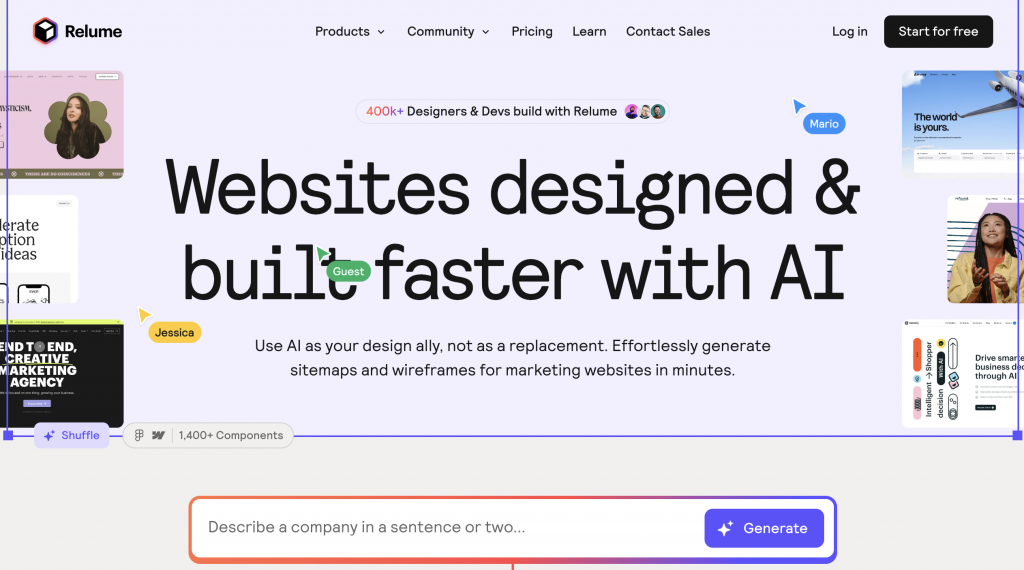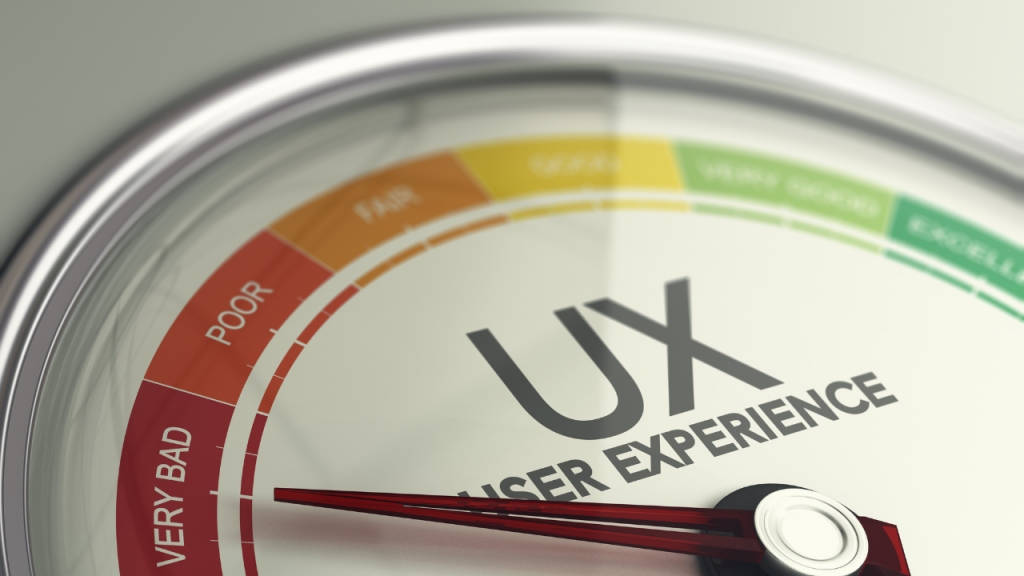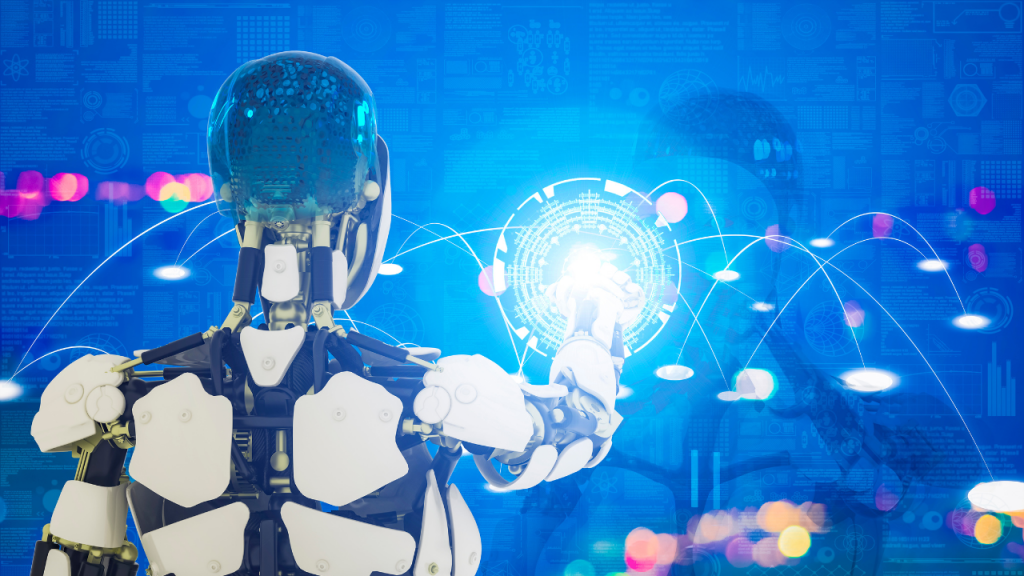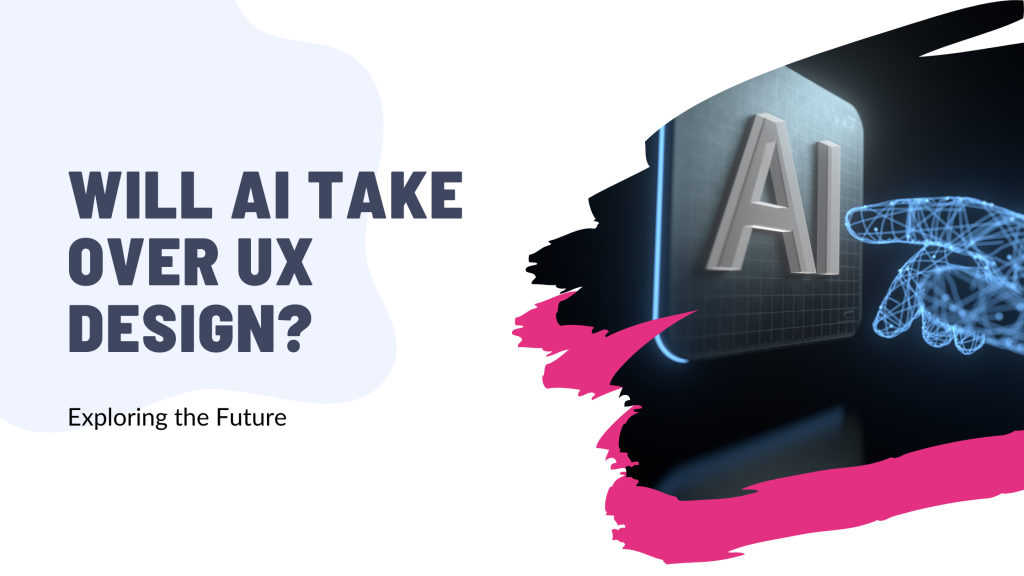Are you curious about the future of UX design in the age of artificial intelligence?
You’re not alone! As AI continues to evolve, it’s reshaping how we approach design, sparking excitement and a bit of apprehension.
Will AI revolutionize the way we create user experiences, or will it replace the creativity and empathy of human designers?
In this post, we’ll dive into these questions, exploring how AI is transforming the design landscape and what it means for your role as a designer.
Get ready to uncover the possibilities and prepare for an exciting journey ahead in UX design!

If you need help creating your website, don’t hesitate to contact us. Click here.
Understanding UX Design
In today’s digital world, user experience (UX) design is more important than ever. At its core, UX design is all about creating products that offer meaningful and relevant experiences to users.
It involves a deep understanding of users’ needs, behaviors, and emotions, allowing designers to craft interfaces that are not only functional but also enjoyable.
As a UX designer, your mission is to put yourself in the shoes of your users, ensuring every interaction they have with your product is seamless and satisfying.
What is UX Design?
UX design is the art and science of enhancing user satisfaction by improving the usability, accessibility, and pleasure provided in the interaction between the user and the product.
It’s about asking the right questions: How does this feature help the user? Does this design solve a problem? UX designers are like detectives, always exploring ways to make things better for users.
Current Trends in UX Design
The field of UX design is constantly evolving with new trends shaping how we think about user experiences.
One major trend is personalization, where designs are tailored to meet individual user preferences. This approach ensures that users feel valued and understood, which can significantly enhance their experience.
Another notable trend is the increasing use of technology to advance UX design. With tools like AI and machine learning, designers can analyze vast amounts of data to create more intuitive and responsive designs.
As technology continues to advance, it’s crucial for you as a designer to stay informed and adapt. Embracing these trends can help you create more effective and engaging designs that truly resonate with your audience.
The Rise of AI in Design
Artificial Intelligence (AI) is revolutionizing various industries, and design is no exception. As you navigate the ever-evolving landscape of UX design, understanding AI’s role becomes crucial.
AI is not just a buzzword; it’s a powerful tool that can elevate your design capabilities and enhance the user experience.

AI’s Capabilities in Design
AI is reshaping how we approach design by offering tools that streamline and automate parts of the creative process. From generating design elements to predicting user behavior, AI technologies are making waves.
Tools like Adobe Sensei and Figma’s AI-powered features are becoming indispensable in modern design arsenals. These tools can assist with tasks such as automating repetitive actions, offering design suggestions, and even creating layouts based on user data.
Consider AI-driven design processes like the use of neural networks to generate complex patterns or styles, which can save countless hours of manual design work.
AI can analyze user interactions and provide insights that help refine and improve designs continuously. This means you can focus more on creativity and strategy while AI handles the heavy lifting.
Benefits of AI in UX Design
The integration of AI in UX design offers numerous benefits that can significantly enhance your workflow. One of the most noteworthy advantages is efficiency and speed.
AI can automate mundane tasks, allowing you to complete projects faster without compromising quality. Imagine having an assistant that takes care of repetitive tasks while you focus on innovation and creativity.
Another compelling benefit is the ability to leverage data-driven insights and analysis. AI can sift through vast amounts of data to identify patterns and trends, providing you with actionable insights.
This data can inform your design decisions, ensuring they are based on solid evidence rather than intuition alone. By understanding user behaviors and preferences through AI, you can create more personalized and effective user experiences.
As you explore the possibilities AI offers in UX design, remember that it’s a tool meant to complement your skills, not replace them. Embrace AI’s potential to enhance your designs, and you’ll be well-equipped to tackle the challenges of the future.
Will AI Replace UX Designers?
The question on many minds today is whether AI will eventually replace UX designers. While AI offers incredible tools and capabilities, it’s crucial to recognize that there are aspects of design that remain uniquely human.
Limitations of AI in UX Design
One of the key limitations of AI lies in its inability to fully replicate human empathy and creativity. UX design is not just about creating functional interfaces; it’s about understanding and connecting with users on an emotional level.

This requires a nuanced understanding of human emotions, desires, and cultural contexts—something AI, despite its advancements, cannot achieve on its own. Designers bring empathy into their work, crafting experiences that resonate on a personal level.
Furthermore, AI struggles with complex decision-making that often involves ethical considerations or ambiguous scenarios. While AI excels at processing data and identifying patterns, it lacks the ability to navigate the gray areas that require critical thinking and moral judgment.
These scenarios often call for a human touch, where designers weigh options and make decisions that reflect both user needs and ethical standards.
Collaboration Between AI and Designers
Rather than viewing AI as a threat, consider how it can serve as a powerful ally in your design process. AI can significantly enhance, not replace, the work of human designers by taking over routine tasks, allowing you to focus on more strategic and creative aspects. This collaboration can lead to more innovative solutions and streamlined workflows.
There are numerous case studies and examples of successful collaborations between AI and designers. For instance, Airbnb uses AI to assist designers in choosing optimal layouts and color schemes based on user preferences, resulting in more personalized experiences.
Similarly, companies like Spotify leverage AI to analyze user data, helping designers create interfaces that better match user habits and preferences.
These examples highlight how AI can augment your capabilities as a designer, providing tools and insights that enhance your creative process. By embracing AI as a partner rather than a competitor, you can unlock new possibilities and continue to deliver exceptional user experiences.
Practical Tips for Designers
As AI becomes an integral part of the design landscape, it’s essential to adapt and thrive in this new era. Here are some practical tips to help you navigate the changes and maximize your potential as a designer.
Adapting to AI Integration
To stay competitive and relevant, it’s crucial to embrace new tools and technologies. Take the time to explore AI-powered design tools and understand how they can enhance your workflow.
Familiarize yourself with platforms that offer automation features, data analysis capabilities, and design suggestions. By integrating these tools into your process, you can work more efficiently and effectively.
Moreover, commit to continuous learning and upskilling. The design field is constantly evolving, with new technologies and methodologies emerging regularly.
Stay curious and proactive in seeking out learning opportunities—whether through online courses, workshops, or industry events. By keeping your skills updated, you’ll be better equipped to leverage AI innovations in your work.
Focusing on Human-Centric Skills
While technology is essential, don’t overlook the importance of empathy, intuition, and creativity—traits that define exceptional UX designers. These human-centric skills enable you to connect with users on a deeper level and create designs that truly resonate.
Prioritize understanding user needs and experiences, which will guide you in making informed design decisions.
Additionally, work on building strong communication and problem-solving skills. Effective communication is key to collaborating with team members and stakeholders, ensuring that everyone is aligned with project goals.
Problem-solving skills will help you navigate complex design challenges and find innovative solutions that meet user needs.
By balancing these skills with technological proficiency, you’ll be well-prepared to harness AI’s potential while maintaining the human touch that sets great design apart. Embrace this blend of technology and humanity to create user experiences that are both efficient and emotionally engaging.
The Future of UX Design with AI
As AI continues to evolve, the future of UX design looks both promising and dynamic. By understanding potential shifts in the industry and preparing for these changes, you can position yourself at the forefront of innovation.

Predictions for the Industry
With AI’s growing influence, we can anticipate changes in job roles and responsibilities within UX design. While AI can handle repetitive and data-driven tasks, designers may find themselves taking on more strategic roles that focus on creative problem-solving and user empathy.
This shift will likely result in a greater emphasis on designing holistic user experiences that integrate seamlessly across various platforms and touchpoints.
Moreover, emerging trends and opportunities are set to redefine UX design. We might see increased demand for personalized experiences, driven by AI’s ability to analyze user preferences and behaviors.
Designers who can leverage AI to craft tailored interactions will be highly sought after. Additionally, the rise of voice interfaces and augmented reality presents new avenues for UX exploration, offering exciting challenges and opportunities to innovate.
Preparing for the Future
To thrive in this evolving landscape, it’s crucial to stay informed about industry developments. Regularly engage with design communities, read up on the latest research, and follow thought leaders who are shaping the future of UX design. This knowledge will help you anticipate changes and adapt your skills accordingly.
Encourage a culture of innovation and experimentation within your work. Be open to trying new tools, methodologies, and ideas that push the boundaries of traditional design. Experimentation leads to discovery, and embracing it can help you develop unique solutions that set your work apart.
By preparing for the future and staying adaptable, you can harness AI’s potential to enhance your designs while maintaining the creativity and empathy that define exceptional user experiences. Embrace the changes ahead with confidence, knowing that you have the skills and mindset to navigate this exciting new era of UX design.

If you need help creating your website, don’t hesitate to contact us. Click here.
Conclusion
As we look to the future of UX design in the age of AI, it’s clear that while AI will continue to transform the industry, it won’t replace the human touch that makes design truly impactful. By understanding the capabilities and limitations of AI, embracing collaboration with these tools, and honing our uniquely human skills, we can create more innovative and empathetic user experiences. Remember, AI is here to enhance your creativity, not overshadow it.
If you need assistance integrating AI into your design processes or have any questions, feel free to reach out through our contact form, or connect with us on Instagram and Facebook. We’re here to help you navigate this exciting journey!

